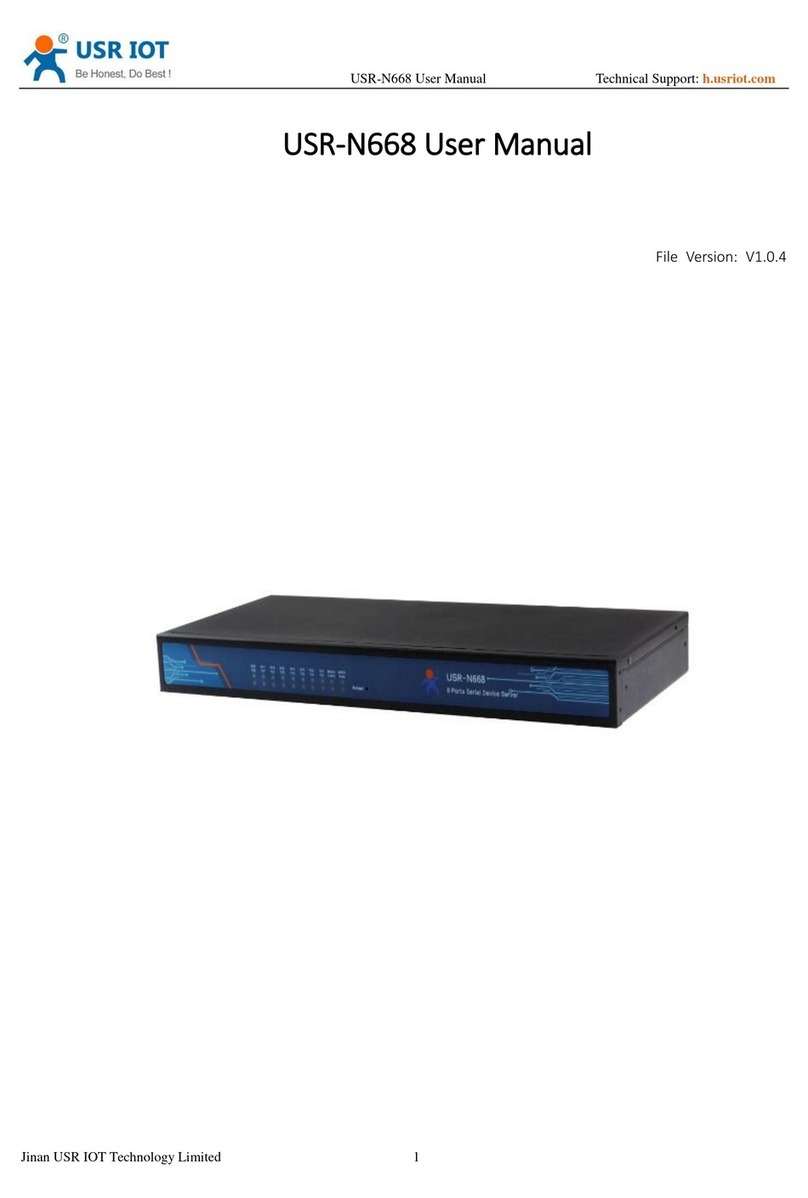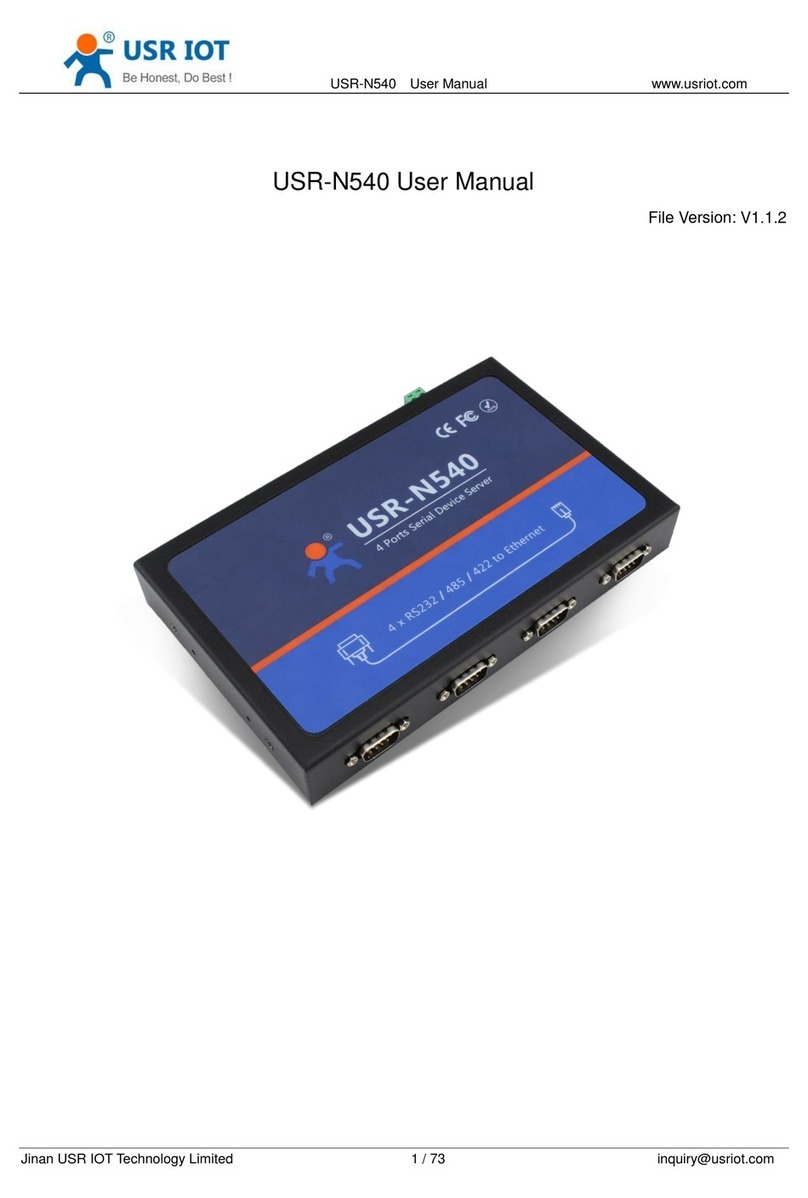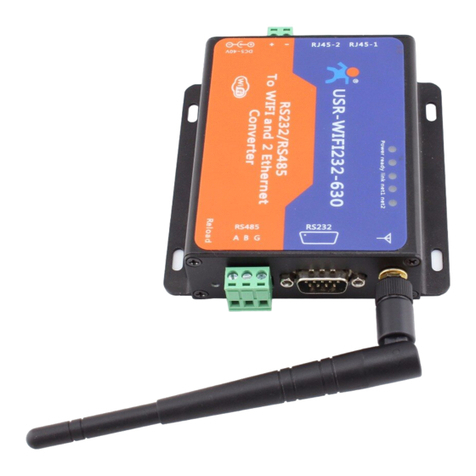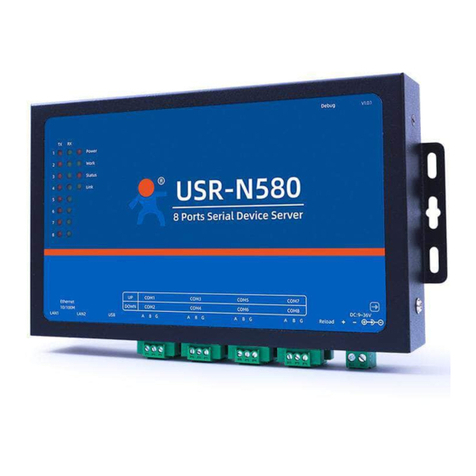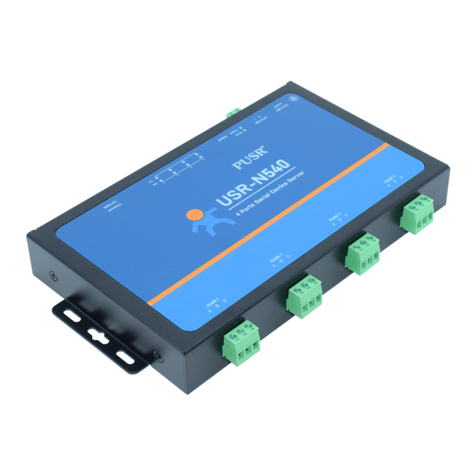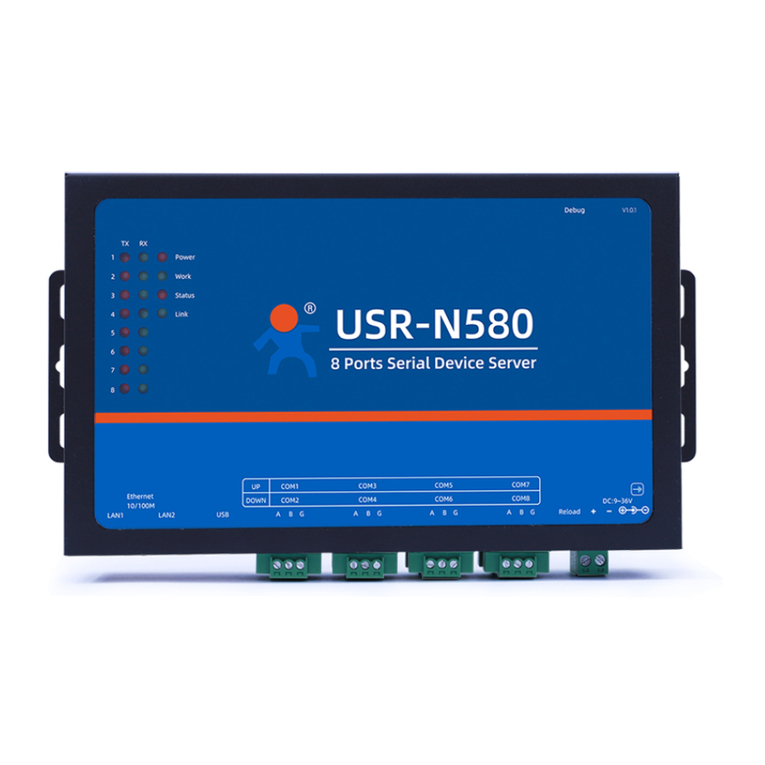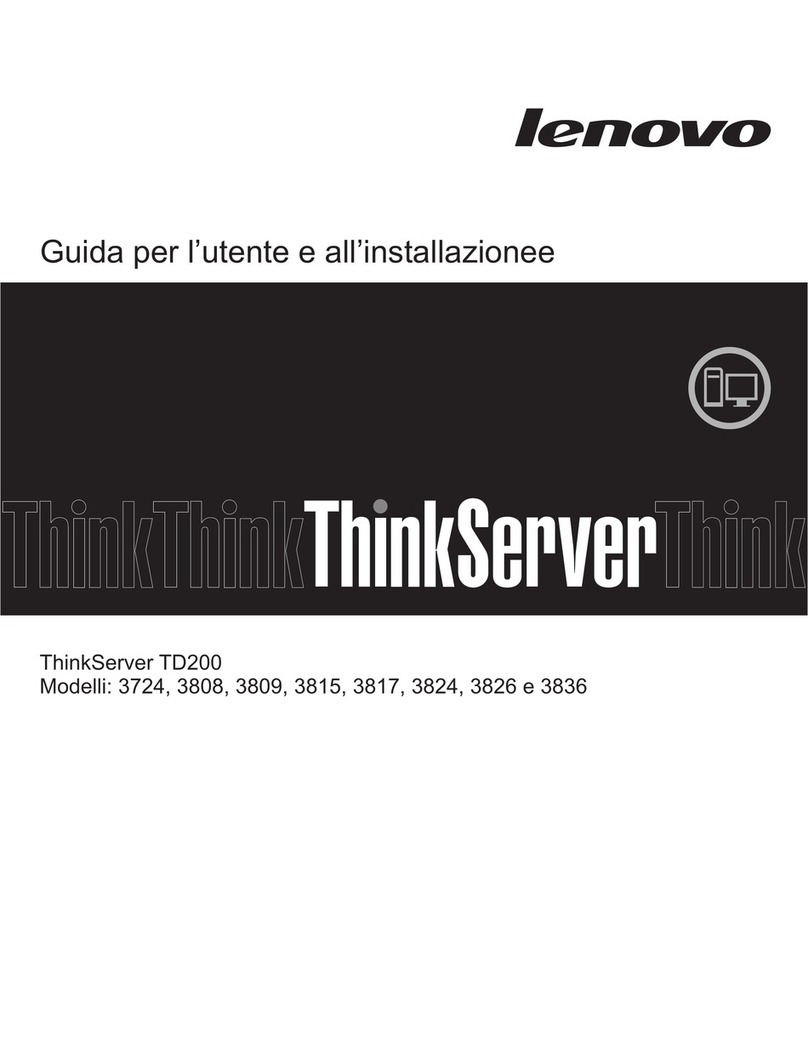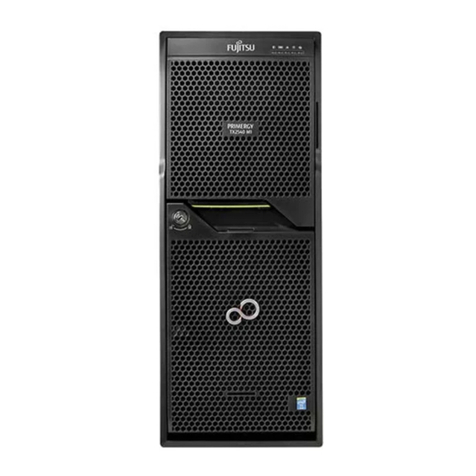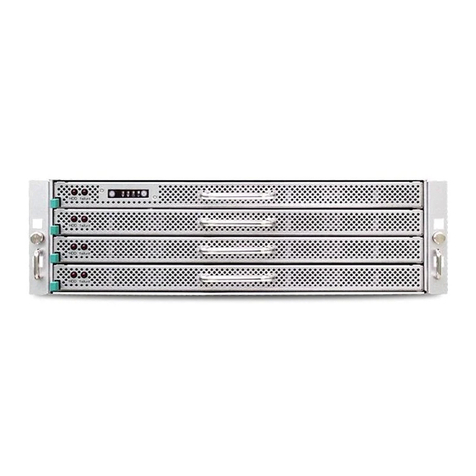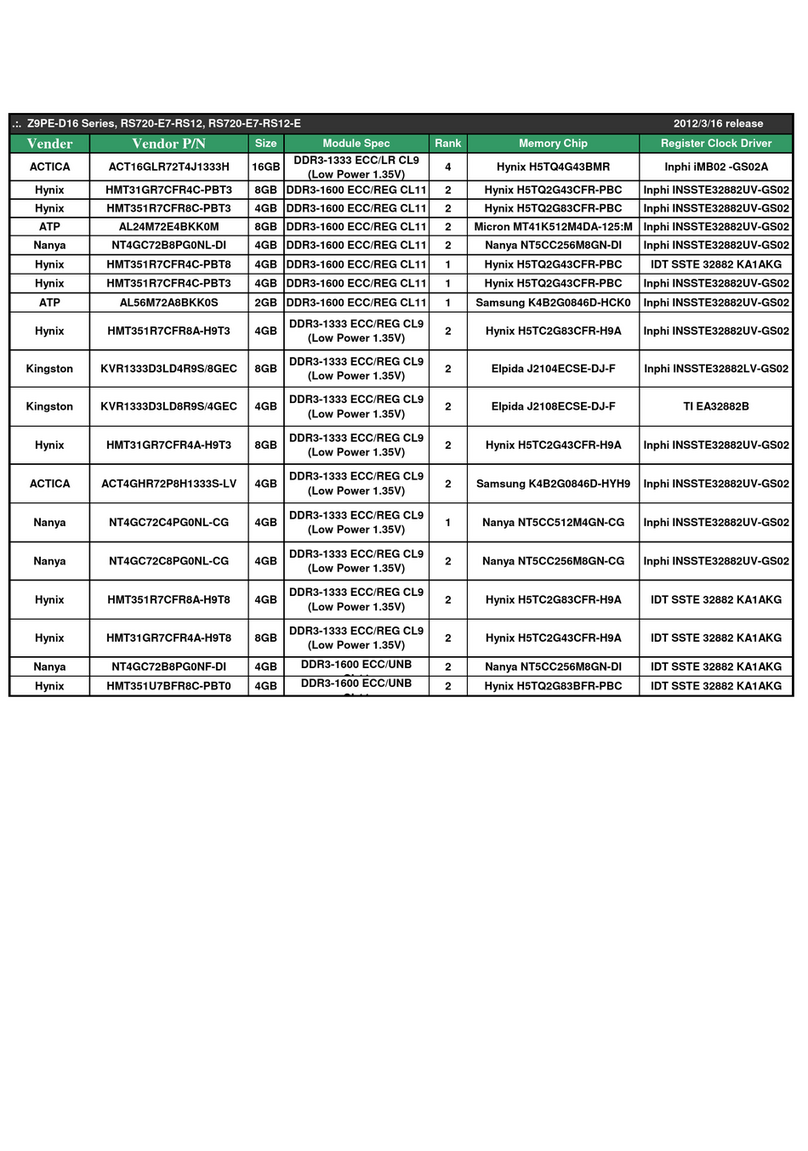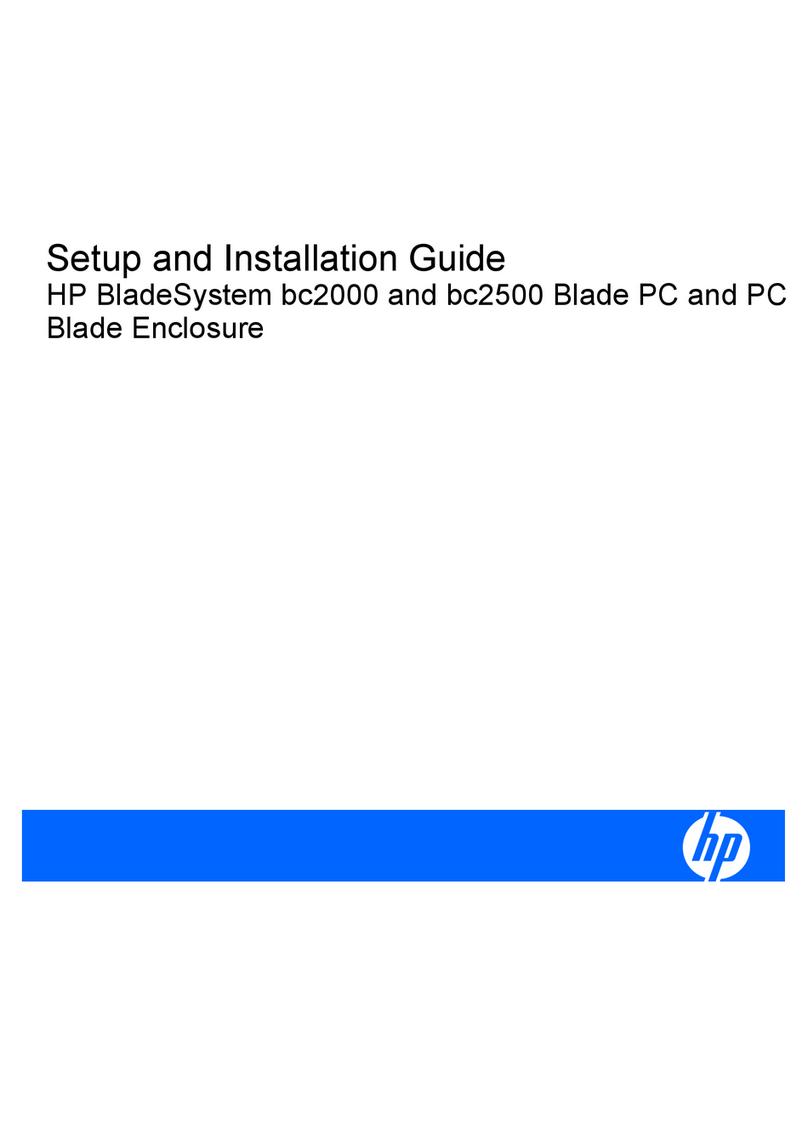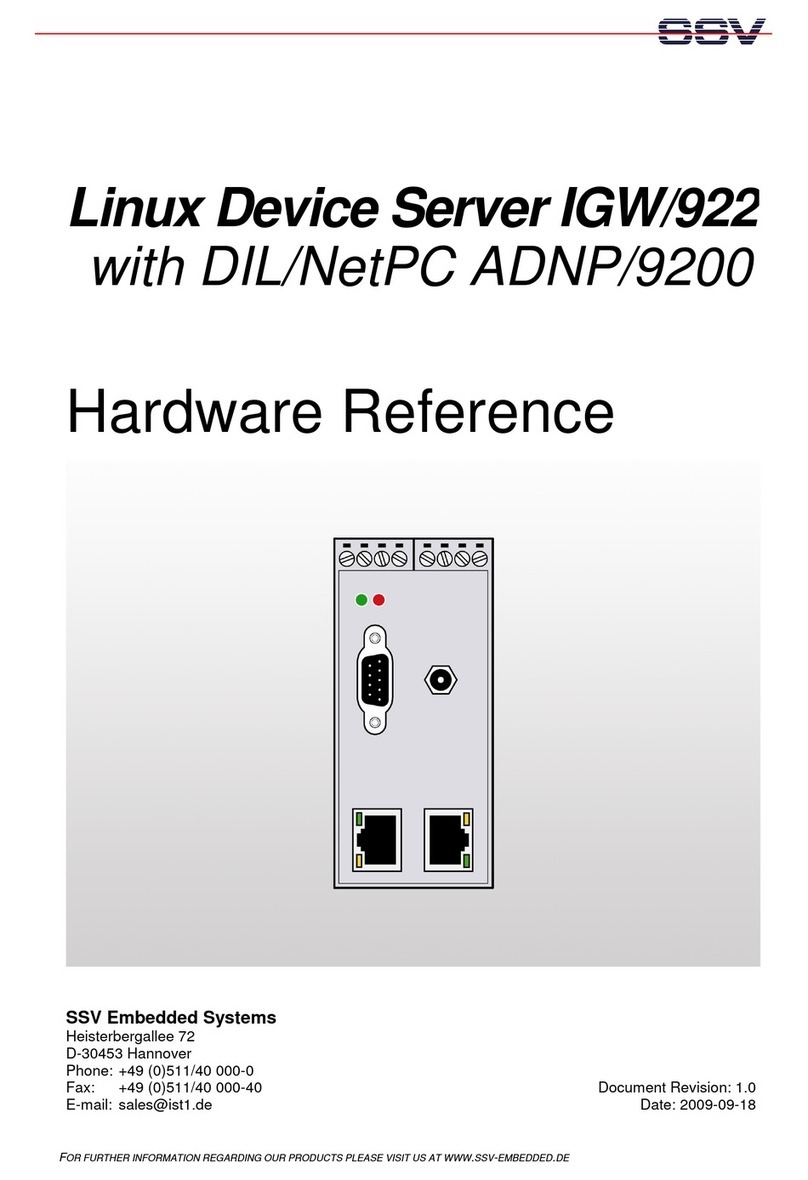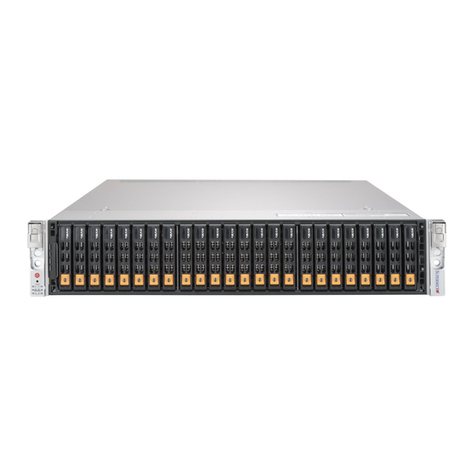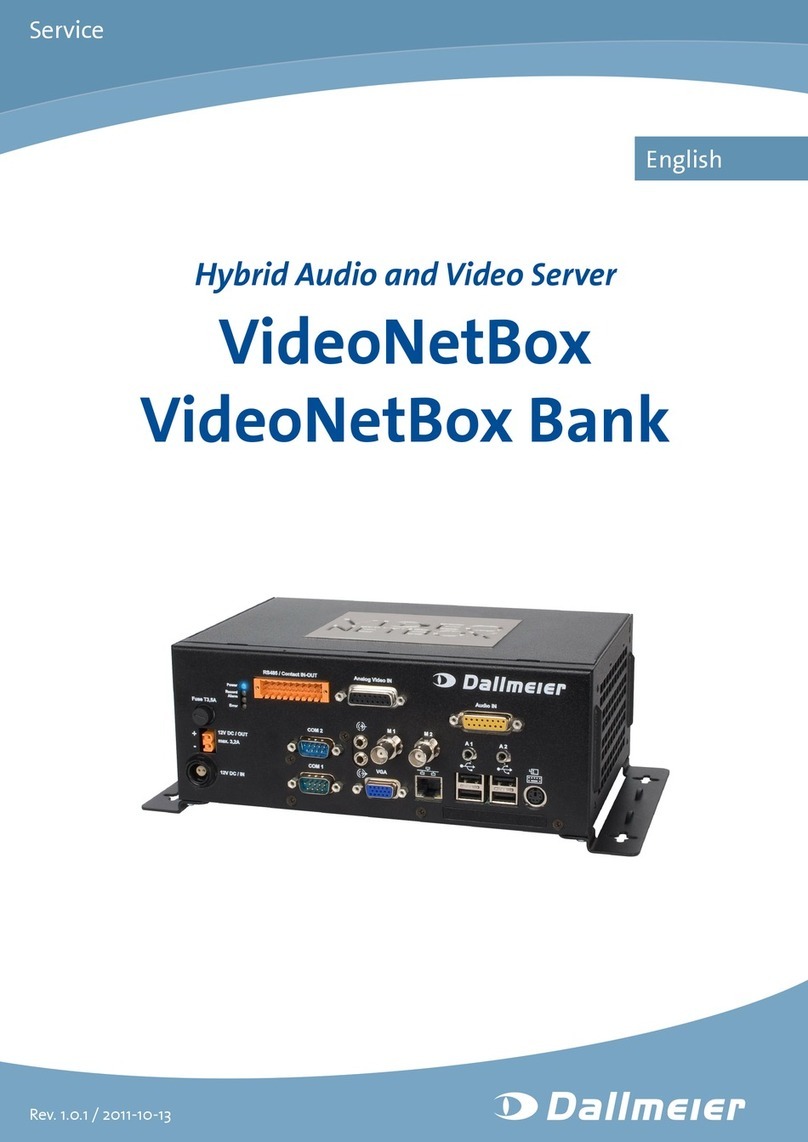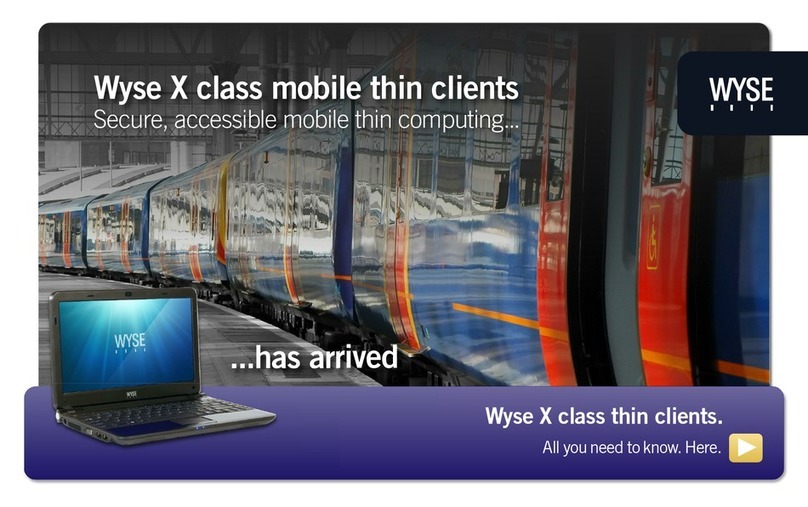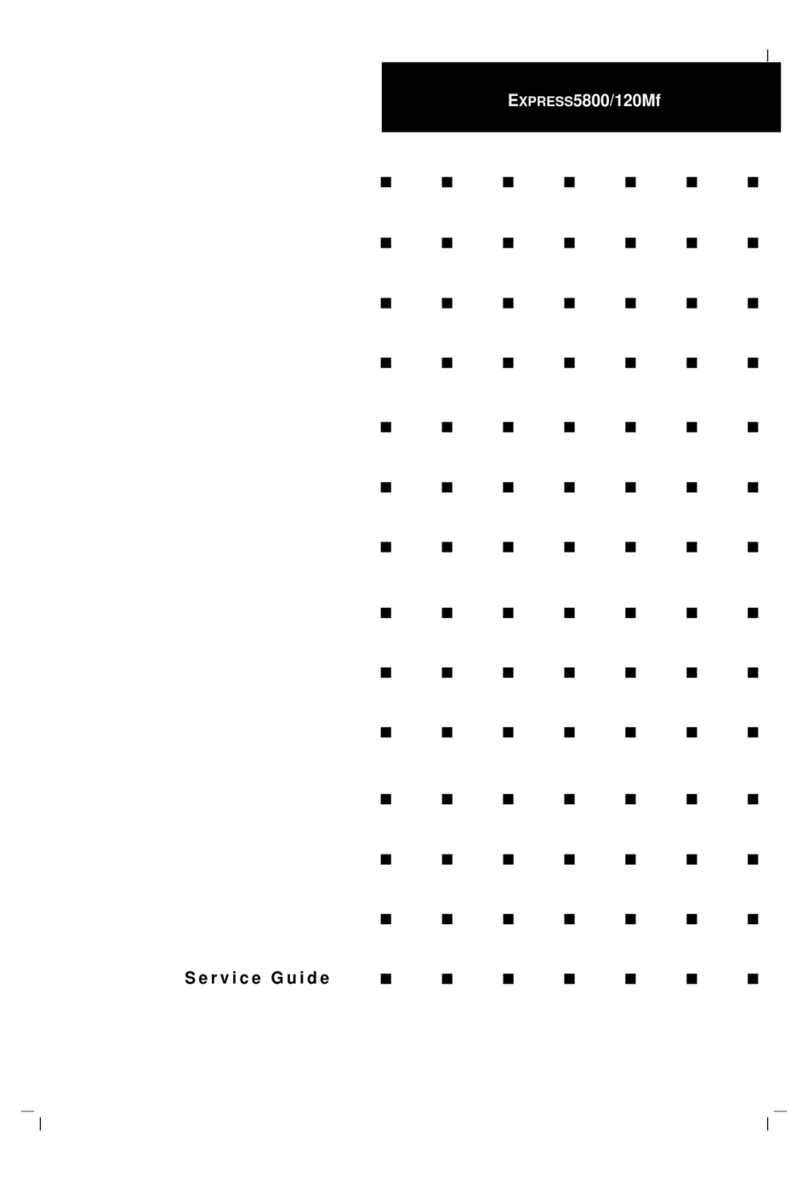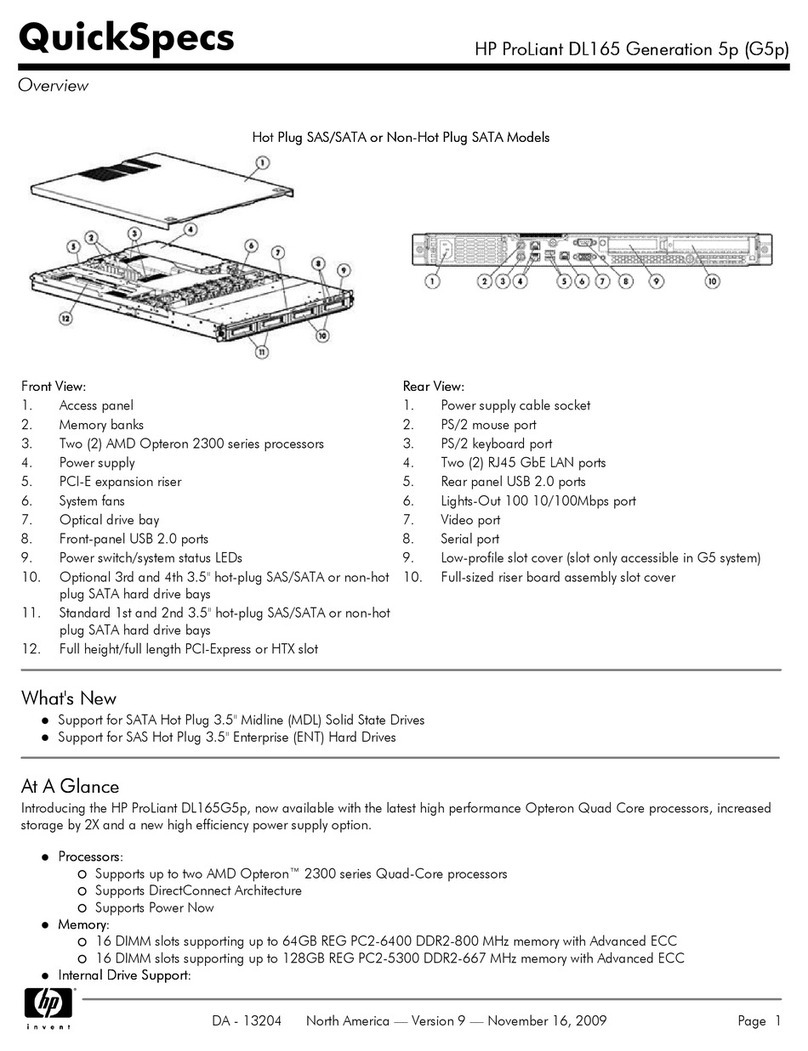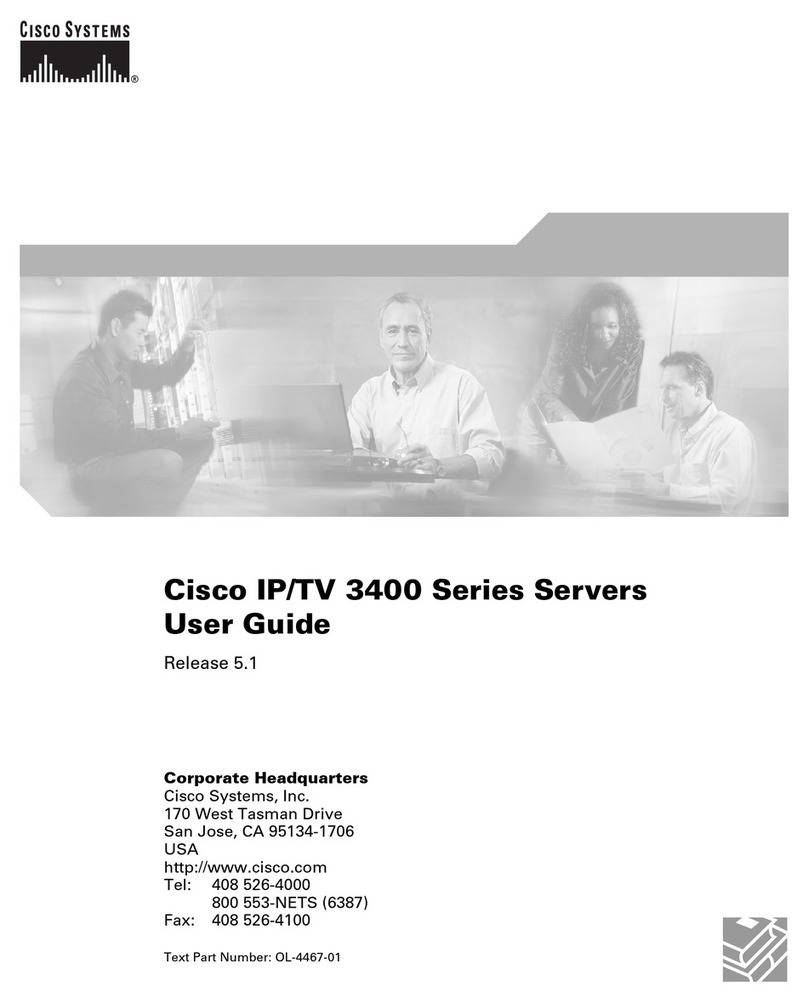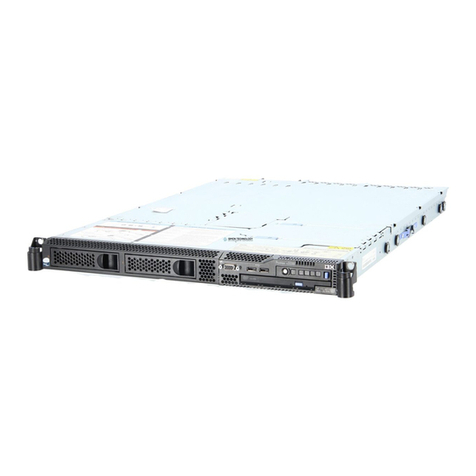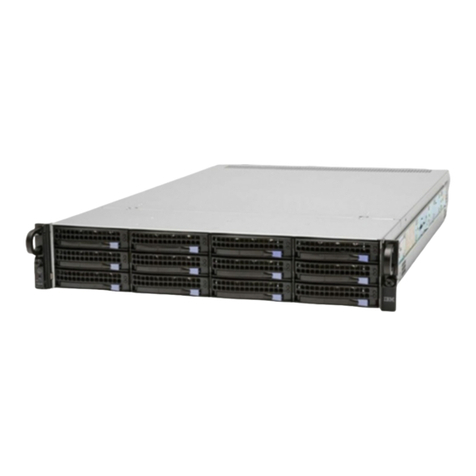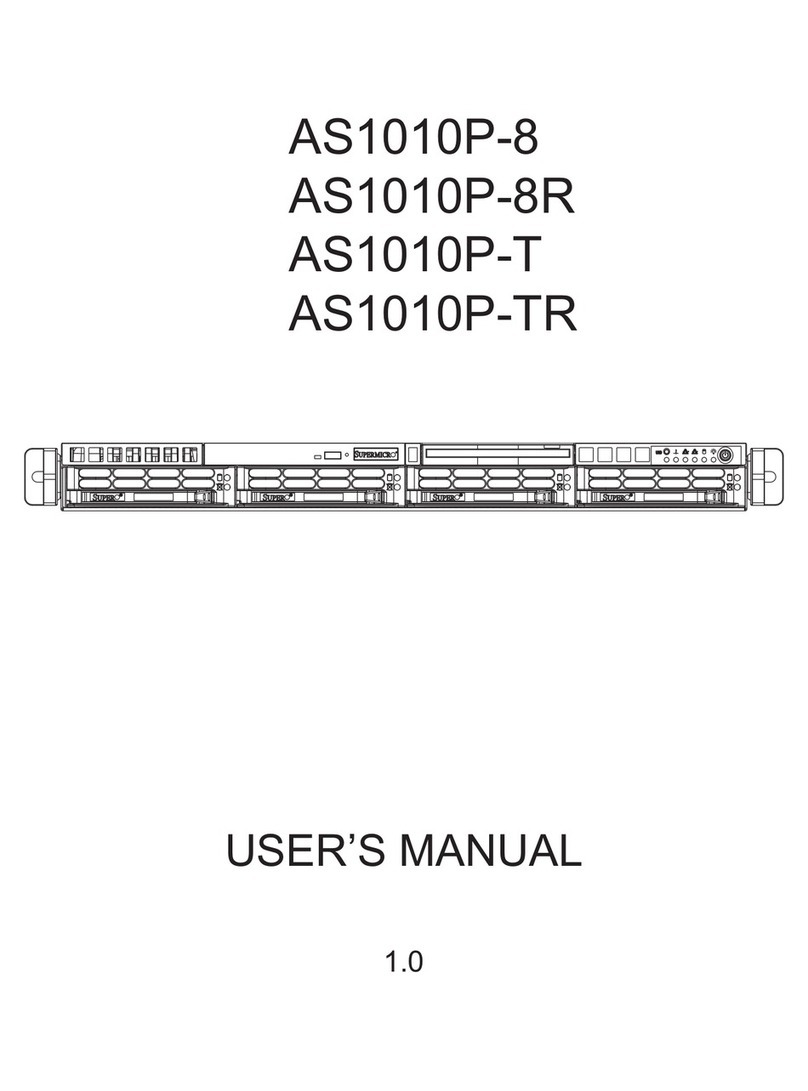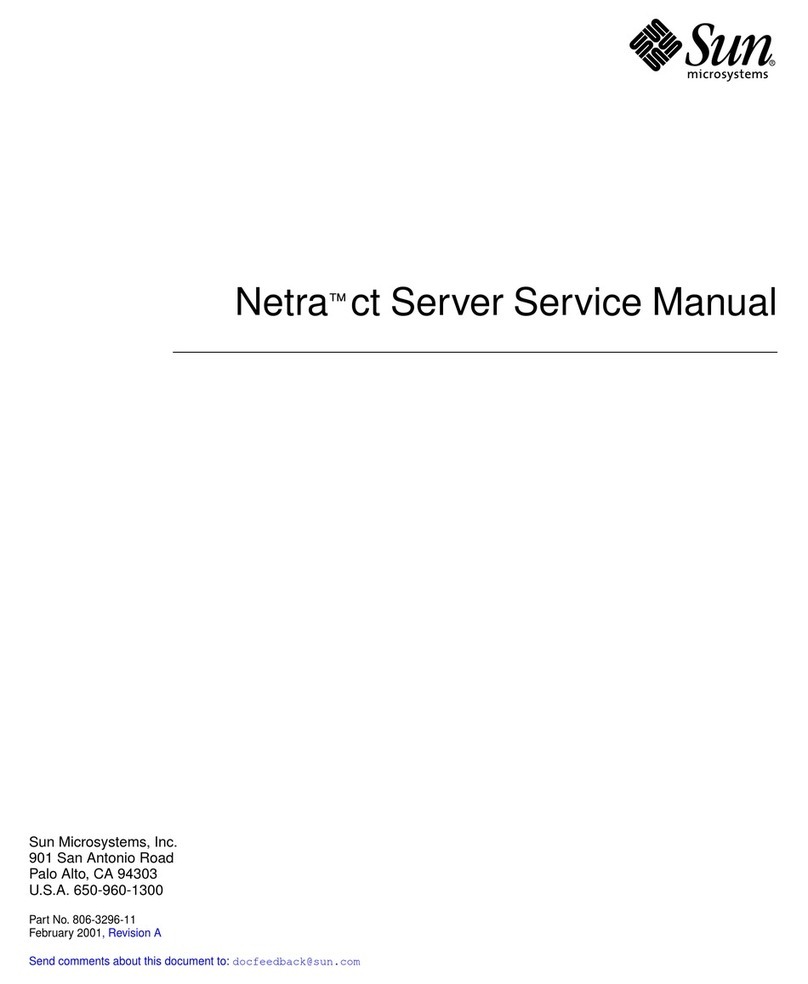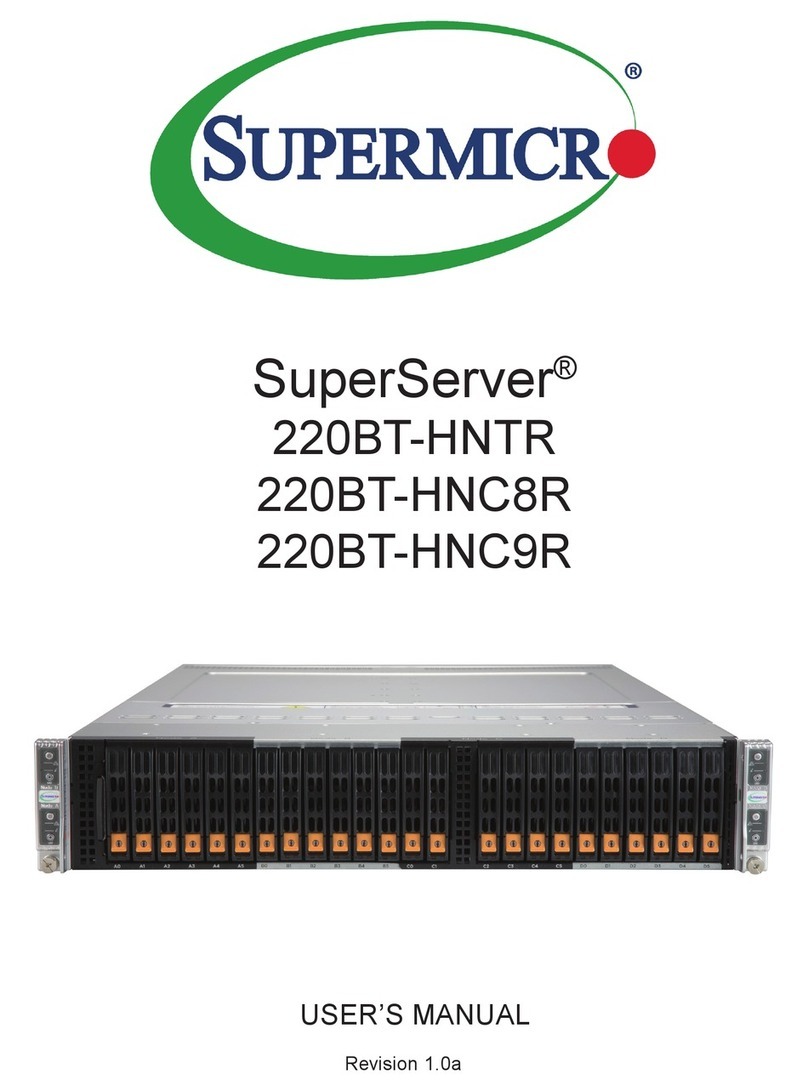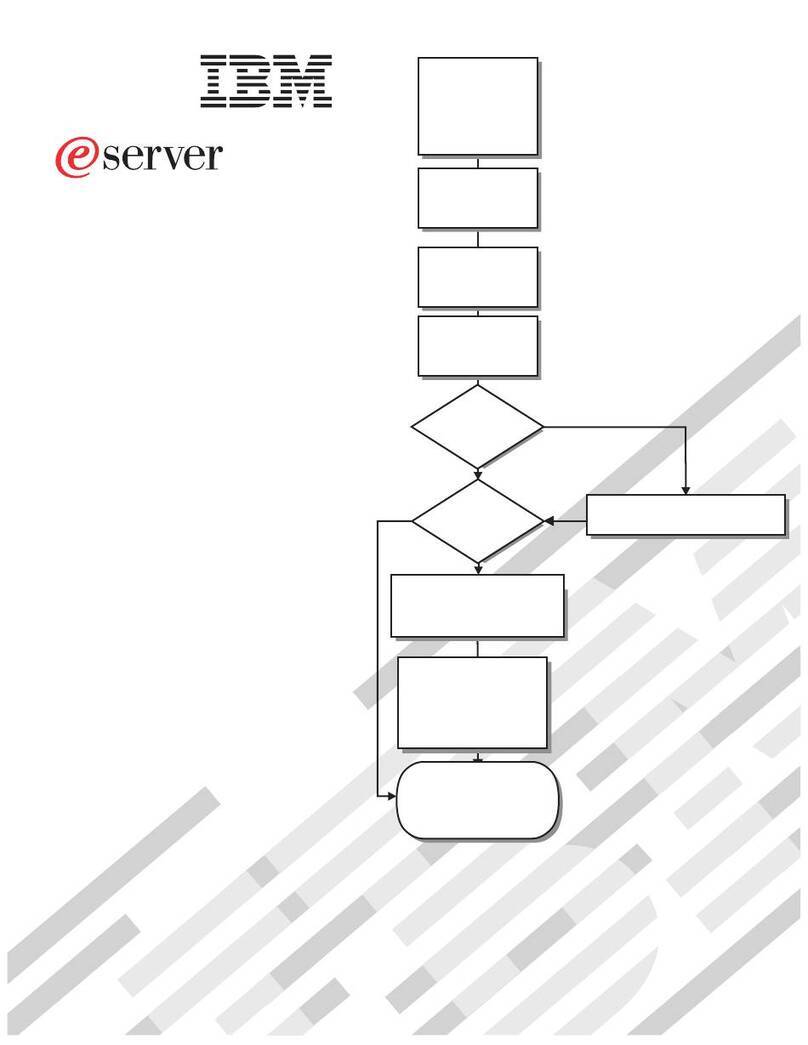USR IOT USR-N510 User manual

USR-N510 User Manual Technical Support: h.usriot.com
Jinan USR IOT Technology Limited 1
USR-N510 User Manual
File Version: V1.0.8.01

USR-N510 User Manual Technical Support: h.usriot.com
Jinan USR IOT Technology Limited 2
Contents
USR-N510 User Manual...................................................................................................................................................1
Features.....................................................................................................................................................................3
1. Get Start .................................................................................................................................................................4
1.1. Application Diagram................................................................................................................................4
1.2. Hardware Design......................................................................................................................................5
1.2.1. Hardware Dimensions .................................................................................................................5
1.2.2. LED Indicator.................................................................................................................................6
1.2.3. DB9 Pin definition.........................................................................................................................6
1.2.4. DB9 Pinboard ................................................................................................................................6
2. Product Functions ...............................................................................................................................................8
2.1. Basic Functions.........................................................................................................................................8
2.1.1. Static IP/DHCP ...............................................................................................................................8
2.1.2. Hardware Restore default settings ............................................................................................9
2.1.3. Upgrade Firmware Version .........................................................................................................9
2.2. Socket functions .....................................................................................................................................10
2.2.1. TCP Client .....................................................................................................................................10
2.2.2. TCP Server....................................................................................................................................11
2.2.3. UDP Client ....................................................................................................................................12
2.2.4. UDP Server ...................................................................................................................................13
2.2.5. HTTPD Client...............................................................................................................................14
2.2.6. WebSocket....................................................................................................................................15
2.3. Serial port................................................................................................................................................16
2.3.1. VCOM Application .......................................................................................................................16
2.3.2. Flow Control .................................................................................................................................16
2.3.3. Serial Package Methods.............................................................................................................17
2.3.4. Baud Rate Synchronization.......................................................................................................18
2.4. Features....................................................................................................................................................19
2.4.1. Identity Packet Function ............................................................................................................19
2.4.2. Heartbeat Packet Function .......................................................................................................20
2.4.3. Impersistent Connection...........................................................................................................20
2.4.4. Modbus Gateway .........................................................................................................................21
2.4.5. Network Printing ........................................................................................................................22
2.4.6. Editable Web server ....................................................................................................................23
3. Parameter Setting..............................................................................................................................................24
3.1. Setup software Configuration...............................................................................................................24
3.2. Web Server Configuration ....................................................................................................................24
3.3. AT Command...........................................................................................................................................25
3.3.1. Serial AT Command ....................................................................................................................25
3.3.2. Network AT Command ...............................................................................................................25
4. Contact Us............................................................................................................................................................27
5. Disclaimer...........................................................................................................................................................27
6. Update History ...................................................................................................................................................27

USR-N510 User Manual Technical Support: h.usriot.com
Jinan USR IOT Technology Limited 3
Features
10/100Mbps Ethernet port, support Auto-MDI/MDIX.
Support TCP Server, TCP Client, UDP Client, UDP Server, HTTPD Client.
Support two sockets.
Support Modbus Gateway.
Support serial port baud rate 600bps~230.4K bps, support None, Odd, Even, Mark, Space parity way.
Support Static IP or DHCP.
Support web server configuration.
Support Websocket function.
Support hardware Reload.
Support Keep-alive.
Support RS232/RS485/RS422.

USR-N510 User Manual Technical Support: h.usriot.com
Jinan USR IOT Technology Limited www.usriot.com
4
1. Get Start
Product link:
http://www.usriot.com/p/rs232rs485rs422-serial-ethernet-converter/
Setup software:
http://www.usriot.com/usr-tcp232-m4k3-setup-software
Figure 1 Download Page
If you have any question, please submit it back to customer center: http://h.usriot.com
1.1. Application Diagram
Figure 2 Application diagram

USR-N510 User Manual Technical Support: h.usriot.com
Jinan USR IOT Technology Limited www.usriot.com
5
1.2. Hardware Design
1.2.1. Hardware Dimensions
Figure 3 Hardware dimensions

USR-N510 User Manual Technical Support: h.usriot.com
Jinan USR IOT Technology Limited www.usriot.com
6
1.2.2. LED Indicator
Indicator
Status
PWR
On: Power on
Off: Power off
WORK
On: Working
Off: Not working
TX
On: Sending data to serial
Off: No data sending to serial
RX
On: Receiving data from serial
Off: No data receiving from serial
Figure 4 Hardware Indicator
1.2.3. DB9 Pin definition
Pin Number
RS232
RS422
RS485
1
2
RXD
RX+
3
TXD
TX-
B-
4
5
GND
6
7
RTS
TX+
A+
8
CTS
RX-
9
Figure 5 DB9 Pin definition
1.2.4. DB9 Pinboard
We provide DB9 pinboard for user to use terminal connection.

USR-N510 User Manual Technical Support: h.usriot.com
Jinan USR IOT Technology Limited www.usriot.com
7
Type
1
2
3
4
5
RS232
TX
RX
GND
RS485
A+
B-
GND
RS422
T+
T-
R+
R-
GND
Figure 6 DB9 pinboard

USR-N510 User Manual Technical Support: h.usriot.com
Jinan USR IOT Technology Limited www.usriot.com
8
2. Product Functions
This chapter introduces the functions of USR-N510 as the following diagram shown, you can get an overall
knowledge of it.
Serial
Port
Device
Network
Socket A
Socket B
TCPS/TCPC/UDPS/UDPC/HTTPD Client
TCPC/UDPC
Identity
Packet
Websocket
Serial port
packaging
Network data
transmission
AT Command Mode
Serial AT command Parameter Query/Set
Serial
port
Keep-Alive
USR
CLOUD
Serial
port
packaging
Serial Heartbeat packet Network Heartbeat packet
Webserver
Modbus Gateway
ModbusTCP Gateway
1
1
1
Figure 7 Product Functions diagram
2.1. Basic Functions
2.1.1. Static IP/DHCP
There are two ways for module to get IP address: Static IP and DHCP.
Static IP: Default setting of module is Static IP and default IP is 192.168.0.7. When user set module in Static IP mode,
user need set IP, subnet mask and gateway and must pay attention to the relation among IP, subnet mask and
gateway.
DHCP: Module in DHCP mode can dynamically get IP, Gateway, and DNS server address from Gateway Host. When
user connect directly to PC, module can’t be set in DHCP mode. Because common computer does not have the
ability to assign IP addresses.
User can change Static IP/DHCP by setup software. Setting diagram as follow:

USR-N510 User Manual Technical Support: h.usriot.com
Jinan USR IOT Technology Limited www.usriot.com
9
Figure 8 Static IP/DHCP
2.1.2. Hardware Restore default settings
User can press Reload over 5 seconds then release to restore default settings.
2.1.3. Upgrade Firmware Version
User can contact to salespersons for needed firmware version and upgrade by setup software as follow:

USR-N510 User Manual Technical Support: h.usriot.com
Jinan USR IOT Technology Limited www.usriot.com
10
Figure 9 Upgrade firmware version
2.2. Socket functions
N510 support dual sockets mode. Socket A supports TCP Server, TCP Client, UDP Server, UDP Client and HTTPD
Client. Socket B supports TCP Client and UDP Client.
2.2.1. TCP Client
TCP Client provides Client connections for TCP network services. TCP Client device will connect to server to
realize data transmission between the serial port and server. According to the TCP protocol, TCP Client has
connection/disconnection status differences to ensure reliable data transmission.
N510 work in TCP Client mode need connect to TCP Server and need set the parameter: Remote IP/Port. N510
work in TCP Client won’t accept other connection request except target server and will access server with
random local port.
User can set N510 in TCP Client mode and related parameters by setup software or web server as follows:

USR-N510 User Manual Technical Support: h.usriot.com
Jinan USR IOT Technology Limited www.usriot.com
11
Figure 10 TCP Client
2.2.2. TCP Server
TCP Server will listen network connections and build network connections, commonly used for communication
with TCP clients on a LAN. According to the TCP protocol, TCP Server has connection/disconnection status
differences to ensure reliable data transmission.
N510 work in TCP Server mode will listen local port which user set and build connection after receiving
connection request. Serial data will be sent to all TCP Client devices connected to N510 in TCP Server mode
simultaneously.
N510 work in TCP Server support 8 client connections at most and will kick off oldest connection beyond
maximum connections.
User can set N510 in TCP Server mode and related parameters by setup software or web server as follows:

USR-N510 User Manual Technical Support: h.usriot.com
Jinan USR IOT Technology Limited www.usriot.com
12
Figure 11 TCP Server
2.2.3. UDP Client
UDP transport protocol provides simple and unreliable communication services. No connection connected
/disconnected.
In UDP Client mode, N510 will only communicate with target IP/Port. If data not from target IP/Port, it won’t be

USR-N510 User Manual Technical Support: h.usriot.com
Jinan USR IOT Technology Limited www.usriot.com
13
received by N510.
User can set N510 in UDP Client mode and related parameters by setup software or web server as follows:
Figure 12 UDP Client
2.2.4. UDP Server
In UDP Server mode, N510 will change target IP every time after receiving UDP data from a new IP/Port and will

USR-N510 User Manual Technical Support: h.usriot.com
Jinan USR IOT Technology Limited www.usriot.com
14
send data to latest communication IP/Port.
User can set N510 in UDP Server mode and related parameters by setup software or web server as follows:
Figure 13 UDP Server
2.2.5. HTTPD Client
In HTTPD Client mode, N510 can achieve data transmission between serial port device and HTTP server. User just
need set N510 in HTTPD Client and set the HTTPD header, URL and some other related parameters, then can

USR-N510 User Manual Technical Support: h.usriot.com
Jinan USR IOT Technology Limited www.usriot.com
15
achieve data transmission between serial port device and HTTP server and don’t need care about the HTTP
format of data.User can set N510 in HTTPD Client mode and related parameters by web server as follow:
Figure 14 HTTPD Client
2.2.6. WebSocket
WebSocket function can achieve real-time interaction between serial port and webpage and display user data on
webpage. User can set N510 with WebSocket function by web server as follow:
Figure 15 WebSocket

USR-N510 User Manual Technical Support: h.usriot.com
Jinan USR IOT Technology Limited www.usriot.com
16
2.3. Serial port
2.3.1. VCOM Application
User can download VCOM software from http://www.usriot.com/usr-vcom-virtual-serial-software/. Through
this software user can set up connection between N510 and virtual serial to solve the problem that traditional
equipment PC software used in serial port communication way.
2.3.2. Flow Control
N510 support hardware flow control way ( RTS/CTS, only take effect in RS232 mode ) and software flow control way
Xon/Xoff. User can select Flow Control method by setup software or web server as follows:
Figure 16 Flow Control

USR-N510 User Manual Technical Support: h.usriot.com
Jinan USR IOT Technology Limited www.usriot.com
17
2.3.3. Serial Package Methods
For network speed is faster than serial. Module will put serial data in buffer before sending it to network. The data
will be sent to Network as Package. There are 2 ways to end the package and send package to network - Time
Trigger Mode and Length Trigger Mode.
For example, set package time 10ms and package length 512, after serial port receiving data, if receiving interval
time beyond 10ms or data length beyond 512, data will be sent to network. One of package time or package length
is 0, N510 will adopt the method which is not 0. User can set package time and package length by setup software
or web server as follows:
Figure 17 Serial Package

USR-N510 User Manual Technical Support: h.usriot.com
Jinan USR IOT Technology Limited www.usriot.com
18
2.3.4. Baud Rate Synchronization
When module works with USR devices or software, serial parameter will change dynamically according to
network protocol. Customer can modify serial parameter by sending data conformed to specific protocol via
network. It is temporary, when restart DTU, the parameters back to original parameters.
User can adopt Baud Rate Synchronization function by setup software or web server as follows:
Figure 18 Baud Rate Synchronization

USR-N510 User Manual Technical Support: h.usriot.com
Jinan USR IOT Technology Limited www.usriot.com
19
2.4. Features
2.4.1. Identity Packet Function
Figure 19 Identity Packet application diagram
Identity packet is used for identify the device when module works as TCP client/UDP client. There are two
methods for identity packet.
Identity data will be sent when connection is established.
Identity data will be add on the front of every data packet.
User can set N510 with Identity Packet function by web server as follow:
Figure 20 Identity Packet

USR-N510 User Manual Technical Support: h.usriot.com
Jinan USR IOT Technology Limited www.usriot.com
20
2.4.2. Heartbeat Packet Function
Heartbeat packet: Module will output heartbeat data to serial or network periodic. User can configure the
heartbeat data and time interval. Serial heartbeat data can be used for polling Modbus data. Network heartbeat
data can be used for showing connection status and keep the connection (only take effect in TCP/UDP Client
mode). User can set N510 with Heartbeat Packet function by web server as follow:
Figure 21 Heartbeat Packet
2.4.3. Impersistent Connection
N510 support impersistent connection function in TCP Client mode. When N510 adopt this function, N510 will
connect to server and send data after receiving data from serial port side and will disconnect to server after
sending all the data to server and no data from serial port side over 3s. User can set N510 with impersistent
connection function by web server as follow:
Figure 22 Impersistent Connection
This manual suits for next models
1
Table of contents
Other USR IOT Server manuals
